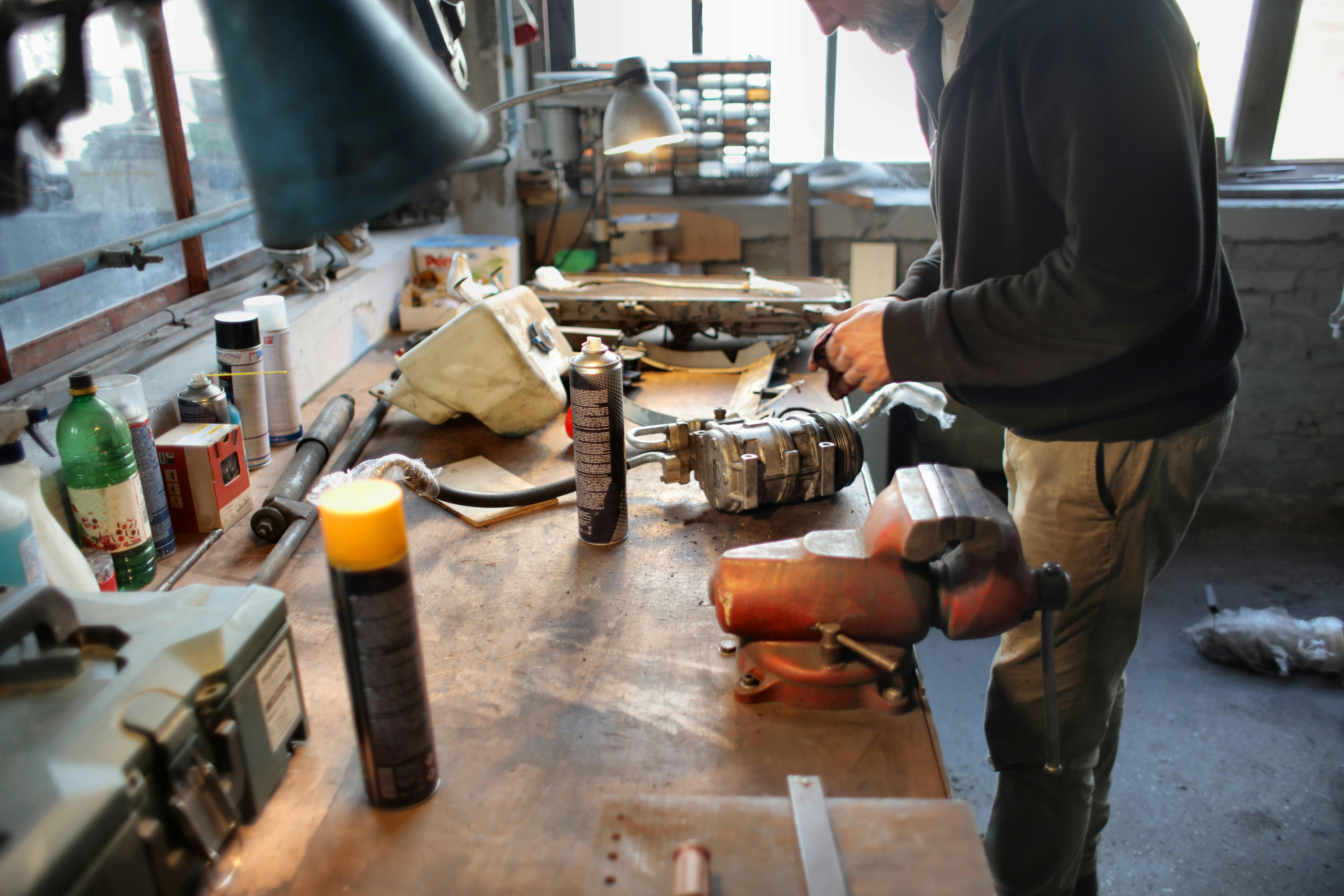Invisalign is an increasingly popular orthodontic treatment option that can help to straighten teeth without the use of traditional metal braces. It involves the use of a series of clear, removable aligners to gradually move the teeth into the desired position. While Invisalign is often used to treat upper teeth, it can also be used for bottom teeth as well. This article will discuss how Invisalign can be used to fix bottom teeth and the steps involved in the process.Yes, Invisalign can be used to fix bottom teeth. The aligners used by Invisalign are custom-made for each individual and can be used to move both upper and lower teeth.
What is Invisalign?
Invisalign is an orthodontic treatment that uses clear aligners to straighten teeth. Unlike traditional braces, which involve metal wires and brackets, Invisalign uses a series of custom-made, clear plastic aligners to gradually shift teeth into the desired position. Each set of aligners is designed to move teeth a certain amount over a certain period of time, with each set being worn for two weeks before being replaced with the next set in the series.
How Does it Work?
The Invisalign process begins with an initial consultation with an orthodontist or dentist who will assess your teeth and determine if Invisalign is an appropriate treatment for you. If so, they will take impressions and photographs of your teeth and create a 3D digital model of your mouth. This model will be used to create a series of custom-made aligners that are specifically designed to move your teeth into their desired positions.
Once the aligners have been created, you will be instructed to wear them for 20-22 hours per day, taking them out only when eating or brushing your teeth. You will need to change out your aligners every two weeks in order for the treatment to be effective. As you progress through the series of aligners, you may experience some discomfort as your teeth adjust; however this discomfort should not last longer than a few days.
At regular intervals throughout the course of treatment, you will need to visit your orthodontist or dentist in order to ensure that your progress is on track and any adjustments can be made if needed. Once all the aligners have been worn and your desired results have been achieved, you may need to wear a retainer in order to keep your teeth in their new positions.
Benefits of Invisalign for Bottom Teeth
Invisalign is becoming increasingly popular for straightening bottom teeth. Invisalign is a series of clear, customized, removable aligners used to gradually shift teeth into the desired position. It is an effective alternative to traditional metal braces and offers many benefits.
One of the main advantages of Invisalign for bottom teeth is that it is almost invisible. The aligners are made from a clear plastic material that fits snugly over your teeth and blends in with your smile. This makes it much less noticeable than traditional metal braces, which can be quite bulky and unsightly.
In addition, Invisalign allows you to enjoy many activities that may be difficult or uncomfortable with traditional metal braces. Eating certain foods, playing sports, or kissing your partner are all activities that are far easier when using Invisalign rather than metal braces.
Invisalign also requires fewer trips to the orthodontist than traditional metal braces do. Instead of having to go in for regular check-ups and adjustments every few weeks, you can simply switch out your aligners every two weeks or so as directed by your orthodontist. This means fewer appointments and less time away from work or school due to orthodontic visits.
Finally, Invisalign treatment usually takes less time than traditional metal braces do. On average, treatment times range from 6-18 months depending on the severity of the case but they can often take much less time than with metal braces since there are no wires or brackets to adjust throughout the course of treatment.
In conclusion, Invisalign offers many advantages for straightening bottom teeth including being nearly invisible, allowing you to enjoy activities with greater ease and comfort as well as fewer visits to the orthodontist and shorter treatment times compared with traditional metal braces.
Types of Issues the Invisalign Can Treat
Invisalign is a modern orthodontic treatment option that can correct a variety of issues with your teeth. It can treat issues such as overcrowding, misalignment, gaps between teeth, and overbites. Invisalign is an effective and comfortable way to straighten your teeth without the hassle of traditional metal braces.
The aligners used in Invisalign treatment are custom-made from medical-grade plastic that fits snugly over your teeth. The aligners work by gently pushing your teeth into the desired position over time. Each set of aligners is worn for two weeks before being replaced with the next set in the series, gradually moving your teeth into proper alignment.
Invisalign can be a great choice for adults who don’t want to deal with the look or feel of metal braces. The aligners are virtually invisible and comfortable to wear, making them a discreet option for those who want to maintain their appearance while straightening their teeth. Additionally, there are no restrictions on what foods you can eat while wearing Invisalign—you simply remove them when eating or drinking anything other than water.
In addition to its cosmetic benefits, Invisalign also offers some practical advantages over traditional braces. For one thing, it requires fewer visits to the orthodontist—on average only one visit every four to six weeks—and it requires less time overall for treatment compared to traditional braces.
Overall, Invisalign is an effective and convenient way to straighten your teeth without compromising on aesthetics or convenience. If you have misaligned or crowded teeth and would like a discreet way to correct them, speak to your dentist about whether Invisalign could be right for you.
What to Expect During the Treatment
When undergoing a treatment, it is important to know what to expect. Depending on the type of treatment, the experience may vary. Generally, you can expect your doctor and healthcare team to explain the procedure and any possible risks or side effects before starting. They will also provide instructions on how to prepare for the procedure. During the treatment, you should be kept comfortable and be given time to ask questions or voice any concerns that arise. Your healthcare team will also provide support and guidance throughout the process, should you have any questions or feel anxious. After the treatment, your healthcare team will review any instructions you need for recovery and provide advice for any follow-up care that may be necessary.

The Cost of Invisalign for Bottom Teeth
The cost of Invisalign for bottom teeth can vary depending on the severity of the misalignment. Generally speaking, the cost of Invisalign for bottom teeth is more expensive than traditional braces, as it requires a series of custom-made aligners that must be replaced every few weeks. Furthermore, the cost of treatment may also vary depending on the complexity of the treatment plan, which can include additional procedures such as teeth whitening or veneers.
In most cases, patients can expect to pay between $3,000 and $8,000 for their Invisalign treatment. This price includes all required aligners, office visits and any additional procedures that may be necessary. It is important to note that this cost does not include retainers after treatment is completed; these must be purchased separately and typically range in price from $100 to $200.
Patients should also be aware that insurance coverage for Invisalign can vary widely depending on the provider and plan type. It is best to contact your insurance company directly to determine what coverage is available under your specific plan. Additionally, many dentists offer financing options for patients who have difficulty affording treatment, so it is always best to ask about payment plans before committing to a course of treatment.
How Long Does It Take to Straighten Bottom Teeth with Invisalign?
Straightening bottom teeth with Invisalign can take anywhere from 6 to 18 months, depending on how severe the misalignment is. It may take longer if you have more than one issue that needs to be addressed. Your orthodontist will be able to give you a better estimate after assessing your mouth and developing a treatment plan.
Invisalign works by gradually shifting your teeth into the correct position over time. You will wear a series of custom-made aligners that are designed to fit your teeth perfectly and apply gentle pressure in the right places. Each aligner is worn for two weeks before being replaced with the next one in the series. As you progress through your treatment plan, you will be able to see your teeth gradually moving into their proper position.
Your orthodontist will monitor your progress every four to six weeks during your Invisalign treatment. They will adjust the aligners accordingly as needed, and may also suggest changes in your lifestyle such as avoiding certain foods or drinks that could interfere with the alignment process.
The length of time it takes to straighten bottom teeth with Invisalign varies from person to person but typically takes between 6 and 18 months, depending on how severe the misalignment is and how well you follow your orthodontist’s instructions for care and maintenance of your aligners. Your orthodontist can give you a better estimate once they have assessed your mouth and created a customized treatment plan for you.
Oral Hygiene During Invisalign Treatment on Bottom Teeth
Maintaining proper oral hygiene is essential for successful Invisalign treatment. Patients who wear Invisalign aligners on their bottom teeth must take special care of their mouth and teeth to prevent staining and bad breath. Good oral hygiene practices during Invisalign treatment include brushing and flossing the teeth daily, using a fluoride toothpaste, and rinsing with a mouthwash. Additionally, patients should avoid sugary foods and drinks that can cause cavities.
It is also important for patients to clean their aligners regularly. Aligners should be cleaned twice a day with a soft-bristled toothbrush and non-abrasive cleanser. A mild soap or denture cleaning solution can be used to remove plaque or debris from the aligners, but it is important not to use any harsh chemicals or abrasives that could damage the plastic. After cleaning the aligners, they should be rinsed thoroughly in lukewarm water before being placed back in the mouth.
Patients wearing Invisalign on their bottom teeth may also need to visit their dentist more often than usual during treatment for regular checkups and professional cleanings. These visits will help ensure that any potential dental problems are addressed quickly before they become more serious. Professional cleanings can also help remove plaque from hard-to-reach areas of the mouth that cannot be reached when brushing or flossing alone.
By following these tips for proper oral hygiene during Invisalign treatment on bottom teeth, patients can ensure a successful outcome of their treatment and maintain healthy dental habits for years to come.

Conclusion
In conclusion, Invisalign can definitely be used to fix the bottom teeth. It is a discreet and comfortable way of straightening your teeth, and it has proven results when it comes to fixing misaligned bottom teeth. It is important to note that if you are considering Invisalign, make sure you speak with an experienced orthodontist who can best assess your needs and advise you on the most appropriate treatment plan for your situation.
If you feel like Invisalign may be the right choice for you, don’t hesitate to discuss it with your orthodontist. With the right professional guidance and care, Invisalign can help you achieve a beautiful smile that will last a lifetime.
